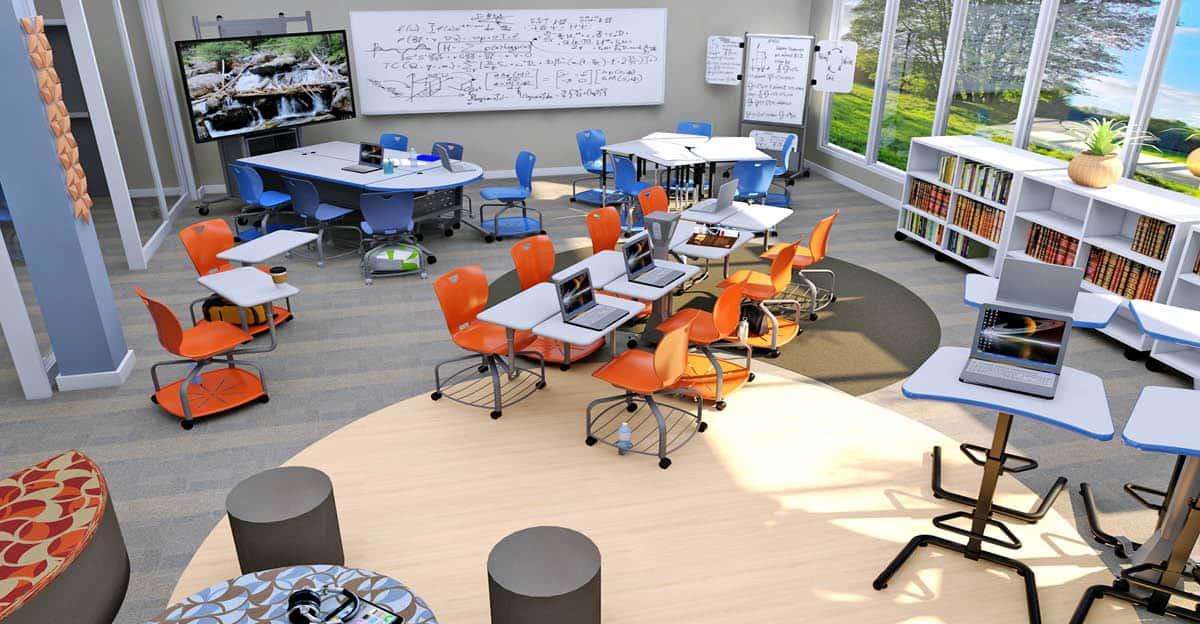Successful student collaboration doesn’t just happen by accident. For this important learning strategy to be effective, teachers must be very intentional in how they set up their classrooms and lead collaborative learning activities.
The American Institutes for Research (AIR) describes high-quality student collaboration as having the following characteristics:
- The
work should be structured around student-centered, culturally responsive
activities.
- Each
activity should require positive group interdependence. That is, the success of
individual students should depend in part on the success of the group as a
whole. This encourages all students to contribute and to help each other.
- The
composition of student groups should be diverse and well-balanced. Each group
should reflect a variety of student interests, backgrounds, and abilities.
- Teachers
must clearly articulate the expectations for each group, including how students
are supposed to act and how they will be assessed for the task at hand.
- All
student interactions should be responsive, respectful, and inclusive of
everyone.
- Each
group should involve shared leadership and decision-making.
Group size and composition
The best collaborative learning outcomes stem from groups that are diverse in nature, with a good mix of abilities and perspectives.
Forming groups whose members have different skill levels can benefit everyone. As stronger students help their less skilled teammates, they gain the benefits that come from teaching others—while the students who struggle benefit by learning from their classmates.
It’s also constructive to include a variety of genders and ethnicities within groups if possible. When students bring different backgrounds and experiences to their collaborative work, they’re more apt to learn from each other—and more likely to come up with innovative solutions to problems.
The optimum group size for collaborative learning depends on the type of activity that students are working on. For some activities, pairing off students is sufficient. For more complex projects with a variety of roles and responsibilities, it can be helpful to have a wider range of skills, ideas, and problem-solving approaches reflected within each group.
In these instances, studies have shown that the optimum group size is four or five students. A group this size is large enough to include a broad range of perspectives, but not so large that students can hide within the group and not contribute.
Setting expectations
When collaborative learning fails, it’s often because students don’t understand how to work well together. Setting clear expectations is critical in laying a proper foundation for success.
Students must be taught how to collaborate effectively. This requires explicit instruction, just as teachers would do with any other skill.
For instance, students should learn what it means to listen actively when another student is speaking. They should learn how to convey sensitivity toward others through the words and tone they use. Finally, they should learn what it means to contribute to the group’s success by acknowledging and building on others’ ideas and by contributing toward the growth of other team members.
What’s more, these skills should be integrated into the rubrics that teachers create to evaluate group projects. Knowing they’ll be evaluated based on how well they apply these skills makes students accountable for their behavior.
There are many sources that teachers can use for inspiration as they develop their own collaborative learning rubrics, including the New Tech Network and PBLWorks.
For more collaborative learning advice—including key insights for creating the right kind of learning environment that will enable student collaboration to thrive—download our FREE guide, “The Secrets to Successful Student Collaboration”
Deanna Marie Lock
Deanna Marie Lock is a reputable educational leader with a multifaceted background as an elementary school teacher, assistant principal and principal, Instructional Solutions consultant, Instruction and Intervention Subject Matter Expert, and today as the Director of Category Expertise and Support across all of School Specialty’s target curriculum solutions and widespread product categories. With 18 years spent specifically in the public education sphere, Deanna now uses this in-classroom expertise to add a personalized, intentional approach when professionally advising to an audience she herself had been a part of for nearly two decades. Deanna is passionate about building purposeful long-term internal and external customer connections, and helping students find their passion and highest potential, too!
Comments
Trackbacks
-
[…] Learning Spaces, from School Specialty LLC […]







The School_Specialty_Learning_Environments_08_2019.pdf guide does not download.
Hi Sue!
When you click on the link, it will open to a new tab that doesn’t seem to go anywhere, but it also starts the pdf download to your computer. If you’re using a pop-up or ad blocker, those may be preventing the download. Clicking on the blocker should give you an option to allow it for this time. Thanks for reading!